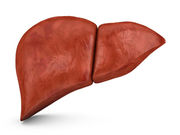Patients with moderate to severe fatty liver disease more likely to have impaired myocardial infusion
MONDAY, Nov. 30, 2015 (HealthDay News) — For patients without diabetes with ST-segment myocardial infarction (STEMI) treated with primary percutaneous coronary intervention (PCI), nonalcoholic fatty liver disease (FLD) independently predicts impaired myocardial perfusion and adverse in-hospital outcomes, according to a study published in the Dec. 15 issue of The American Journal of Cardiology.
Ayse Emre, M.D., from the Siyami Ersek Thoracic and Cardiovascular Surgery Center in Istanbul, and colleagues examined the impact of FLD on myocardial perfusion and in-hospital major adverse cardiac events (MACE) in the setting of STEMI. Data were included for 186 consecutive patients without diabetes who underwent primary PCI for STEMI. Patients were categorized according to FLD severity score: mild (<3) or moderate-to-severe (≥3).
The researchers found that the post-procedural Thrombosis in Myocardial Infarction 3 flow grade did not differ between the groups (89 versus 83 percent; P = 0.201). The likelihood of having absent myocardial perfusion (indicated by myocardial blush grade [MBG] 0 to 1), absent ST-segment resolution (STR), and higher in-hospital MACE rate was increased for patients with FLD scores ≥3. FLD ≥3 was an independent predictor for absent MBG 0/1, absent STR, and in-hospital MACE (odds ratios, 2.856, 2.862, and 2.454, respectively).
“We found that despite similar high rates of Thrombolysis In Myocardial Infarction 3 after primary PCI, patients with FLD score ≥3 are more likely to have impaired myocardial perfusion which may contribute to adverse in-hospital outcome,” the authors write.
Copyright © 2015 HealthDay. All rights reserved.








